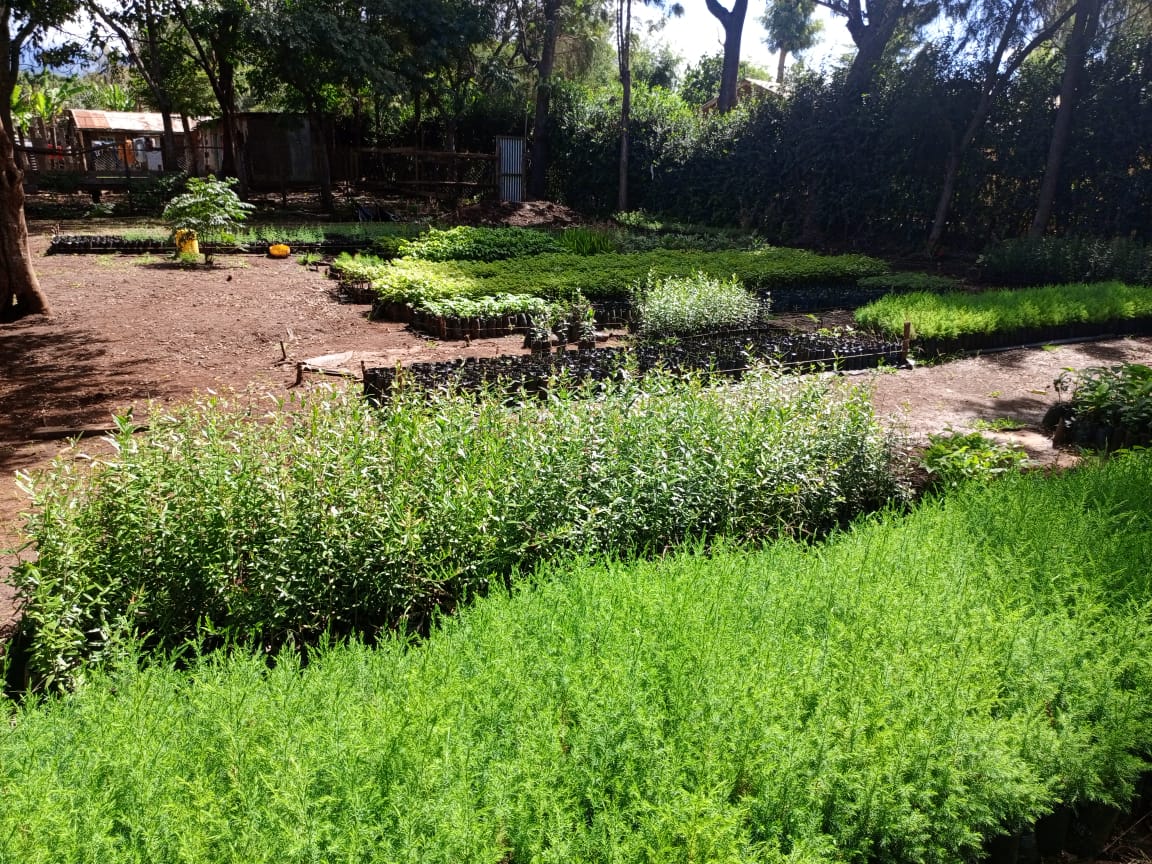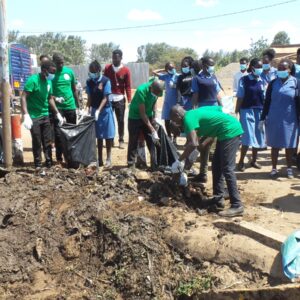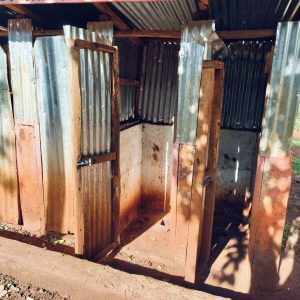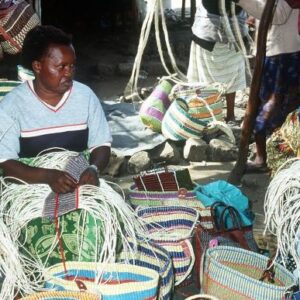Description
1. Rise In Temperatures and Changes In Climate/Weather
Global climate is changing as a consequence of the increasing levels of atmospheric carbon dioxide concentration and the related rise in global mean temperatures.
According to the 2020 Global Climate Report from NOAA National Centers for Environmental Information, averaged across land and ocean, the 2020 surface temperature was 1.76° F (0.98° Celsius) warmer than the twentieth-century average of 57.0°F (13.9°C) and 2.14˚F (1.19˚C) warmer than the pre-industrial period (1880-1900). The 10 warmest years on record have occurred since 2005. Kenya has experienced increasing temperature trends over vast regions of the country, rising by an average of 0.21 °C per decade between 1960 and 2006. Analysis of climate trends in Kenya’s Arid and Semi-Arid (ASAL) areas showed an increase in temperature and a decrease in rainfall between 1977 and 2014. Climate change impacts are to be particularly pronounced in ASALs where the economy and rural livelihoods are highly dependent on climate-sensitive activities, such as pastoralism and rainfed cultivation. Increased temperatures, rainfall variability and strong winds associated with tropical cyclones have combined to create favorable conditions
for the breeding of insects and pests. In early 2020 some parts of Kenya and neighboring East African Countries faced massive swarms of locusts. Climate change is known to be capable of changing the feeding and outbreak dynamics of some insect species.
2. Effect On Water Sources.
Drying up of groundwater reservoirs and wetlands a major source of household water in the rural. Reduction in precipitation. Decreased rainfall levels between March and May/June. The annual flow of water from rivers passing through East Africa, such as the Nile decreased. Increasing drought and desertification in ASAL areas of Kenya is causing an increased scarcity of freshwater. The shrinking of Mount Kenya’s glaciers has exacerbated water shortages. Many rivers that once flowed year round due to glacial run-off now flow seasonally.
3. Effects On Conservation of Natural Ecosystem.
Climate change has disrupted the ecosystem services by affecting species distribution, inter-species relationships. Ecosystem services are also needed by the tourism sector. Kenya’s wildlife species have been affected in a variety of ways as the climate changes, with changes in temperature and rainfall affecting seasonal events and species ranges. Forest cover provide services including improving water quality, preventing erosion, and absorbing greenhouse gases, in addition to being habitats for other wildlife. Forest is lost annually from extreme droughts and wildfires. From 1990 to 2015, forest cover declined by 25% (824,115 hectares), which amounts to 33,000 hectares per year. Loss of forest cover has reduced both the ecosystem services the forests provide, including diminishing yield and quality of the biodiversity it supports. Climate change has impeded the recovery of these forests due to prolonged droughts, desertification flooding and wildfires. It adversely affects forest regenerative capacity, limiting tree growth. There is also an increased risk and severity of forest fires as temperatures increase and droughts increase in length, especially in Mt. Kenya and Aberdare forests. Other affected habitats are coral reefs and mangroves, whose ecosystem services include protection from storm surges, providing opportunities for eco-tourism, and sustaining fisheries. Both have been directly affected by increasing temperatures and rising sea levels.
4. Effects on the Health of People.
Different effects caused or exacerbated by climate change, such as heat, drought, and floods, negatively affect human health. People are put at risk of malaria due to flooding. Malnutrition cases are on the rise due to starvation as a result of drought and flooding especially in the ASAL areas. In 2009, it was recorded in Kenya that the prevalence of stunting in children and survival. Climate change affects the social and environmental determinants of health. It has affected clean air, safe drinking water, sufficient food and secure shelter for Kenyans.
5. Effects on (Food Production) Agriculture and Livestock.
Climate change is already affecting the country’s agricultural sector. Three quarters of Kenya’s farming produce comes from small scale farmers. In some areas of Kenya temperatures exceed 35 °C (95 °F), at which the heat is damaging maize and beans production, the staple crops in Kenya. Areas currently used to cultivate tea are now experiencing increased climate driven stresses. Dealing with drought has become a challenge in areas where rising temperatures cause soils to become drier and burn crops already grown. Although increased irrigation is possible in some places, in other places water supply is reduced, leaving less water available for irrigation when more is needed. Prolonged drought has threatened pasture and feed supplies for livestock especially for the pastoralist communities. Drought has reduced the amount of quality forage available to grazing livestock especially for pastoralists. More extreme temperature and precipitation have prevented crops from growing. Extreme events, especially floods and droughts, harms crops and reduce yields. High temperatures are increasing pest and disease loads in domesticated animals, especially in arid and semi-arid (ASALs) regions. Livestock trends in ASALs between 1977 and 2016 show cattle declined by 26.5%, while sheep and goats increase by 76% and camels by 13.3%. Climate change is resulting in the loss of 52% of the ASAL cattle population (or 1.7 million cattle) at a cost of US$ 340–680 million to the economy.
6. Effects on Manufacturing.
Kenya’s National Climate Change Action Plan (NCCAP) identifies some impacts of climate change on the manufacturing sector. Energy fluctuations or blackouts due to interruptions of energy supply arising from lower annual rainfall and severe droughts which causes the water level in the hydroelectric power plants to decline this resulting to low power production. Greater resource scarcity such as water and raw materials due to climate variations and increasing scarcity of water Greater risk of plant, product and infrastructure damage and supply chain
disruptions from extreme weather conditions such as heat waves, winds, floods, droughts, cyclones and storms. Higher costs of production due to unstable supply of electricity, and higher insurance premiums.
1. Carbon Sinking Initiative through Tree Planting.
2. Food and Livestock Production under Irrigation System.
3. Awareness Creation On Production and Consumption of Green Energy.
1. 4 Food and Water Production systems under Bore Hole supported Drip Irrigation.
2. Plant 10,000 trees around project site and neighborhood.
3. 100 Biogas plants to supply green energy to extended families to reduce pressure on firewood.
4. Supply 500 gas cylinders to 500 households, to reduce use of firewood.
5. Reach out to 5000 people with Messages on Climate Change and its effects.
1. Sensitizations and Entry meetings with National and County Governments, Departments, Stakeholders.
2. Tree planting to increase tree cover to help sink the Green House Gases.
3. Awareness Creation on green energy.
4. Procurement and distribution of green energy facilities to communities and institutions to reduce use of fossil fuels, firewood and charcoal.
5. Community Engagement-Local and opinion leaders from community.
6. Site Identifications-Mapping.
7. Operational Agreements with Community members and leaders.
8. Site Fencing to prevent intruders from animals, theft.
9. Construction of an irrigation System-Borehole drilling, pipeline and drip irrigation for food production, water source for livestock, human and tree planting activities.
10. Providing farming inputs for the local communities-seeds, fertilizers, trainings, storage, pestsides, sprayers,
11. Construction of a livestock watering points/station where livestock can drink water.
12. Construction of water treatment and fetching points/stations where local communities can access clean domestic water.
13. Market linkages for the surplus produce and value addition development.
14. Monitoring and Evaluation.
ASAL County of –Kajiado and Turkana- I Sub County each.
12 Months-January 2022 To December 2022.
1. Increased tree cover in the environment.
2. Reduced amount of Carbon emitted in the atmosphere.
3. Increased production and consumption of Green Energy.
4. Increased production of Food-Livestock, grains, vegetables, fruits and energy foods.
5. Access to water for livestock and household use.
6. Improved nutritional and health conditions of local communities as a result of access to water, food and good environment.
7. Reduced atmospheric temperatures-reduced heat and increased precipitation.
8. Increased adaptability and resilience of effects of climate change, by community members.






